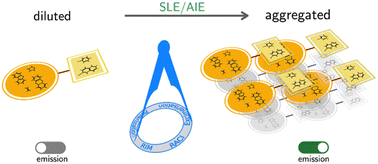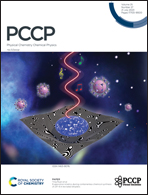Organic compounds for solid state luminescence enhancement/aggregation induced emission: a theoretical perspective†
Abstract
Organic luminophores displaying one or more forms of luminescence enhancement in solid state are extremely promising for the development and performance optimization of functional materials essential to many modern key technologies. Yet, the effort to harness their huge potential is riddled with hurdles that ultimately come down to a limited understanding of the interactions that result in the diverse molecular environments responsible for the macroscopic response. In this context, the benefits of a theoretical framework able to provide mechanistic explanations to observations, supported by quantitative predictions of the phenomenon, are rather apparent. In this perspective, we review some of the established facts and recent developments about the current theoretical understanding of solid-state luminescence enhancement (SLE) with an accent on aggregation-induced emission (AIE). A description of the macroscopic phenomenon and the questions it raises is accompanied by a discussion of the approaches and quantum chemistry methods that are more apt to model these molecular systems with the inclusion of an accurate yet efficient simulation of the local environment. A sketch of a general framework, building from the current available knowledge, is then attempted via the analysis of a few varied SLE/AIE molecular systems from literature. A number of fundamental elements are identified offering the basis for outlining design rules for molecular architectures exhibiting SLE that involve specific structural features with the double role of modulating the optical response of the luminophores and defining the environment they experience in solid state.

- This article is part of the themed collections: Celebrating the scientific accomplishments of RSC Fellows, 2023 PCCP HOT Articles and 2023 PCCP Reviews


 Please wait while we load your content...
Please wait while we load your content...